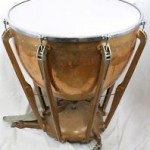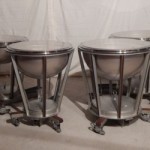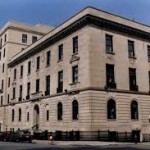My Musical Career | Part Five
At this point in this blog, we have arrived at the point in my life where I had finished my high school education, and was set to embark upon my college career. My college years began in September of 1970, and lasted for almost five years, until I received my Master of Music degree in June of 1975. They were interesting ones and full of the usual ups and downs that one normally goes through.
My last blog post was devoted to my last year in high school and the process of applying for, being rejected by and being accepted by a college. I had been rejected by the Hartt School of Music in West Harford, CT, and after auditioning and undergoing testing at the Manhattan School of Music I March of 1970, I was accepted as a student with a deficit in theory and related disciplines as from the fall of 1970.
The School
Manhattan School of Music has been one of New York City’s three major music schools, the other being the more well-known and prestigious Julliard School of Music, and the other being Mannes College of Music. Originally located at East 105th Street on the East Side of Manhattan, the school moved to 120 Claremont Avenue and 122nd Street – not far from Columbia University and literally in the shadow of Riverside Church in the spring of 1969. The building and lot were the old Julliard School of Music and Dance, which had just taken up their new quarters in Lincoln Center. The old building was bought by the Manhattan School of Music, and the school was in its second year of operation there when I arrived.
A brand new cafeteria was constructed and added to the back of the school. This was named the Mitzi Newhouse Pavilion and was a vast improvement over the previous facilities, or should I say lack of facilities?
I had heard horror stories of the small crowded lunchroom and vending machines, which is all that the Julliard students had, and since the new pavilion was being constructed during MSM’s first year at the newer location, I can only imagine the pain that the students endured due to the lack of adequate eating facilities during the 1969-1970 school year. That cafeteria has since become the home of many kaffee-klatches for many, many students and faculty over the years. As a matter of fact, spending too much time there could get one labeled as “majoring in cafeteria.” One of the hardest things for me to get used too was the fact that I would be commuting to school. Our home was in Yorktown Heights, New York, and the school was located in Manhattan. MSM at this time did not have any dormitories, so the students either found their own living accommodations, or commuted. In my case, the commute involved taking the Walther’s Transit bus (which stopped at the corner of the entrance road to Yorktown High School) into Manhattan and getting on the Number 1 IRT Broadway local subway train and riding it up to 116th Street and Broadway. Getting off there, I’d walk the six blocks to the school, which was located at 122nd Street and Broadway, although it also fronted on Claremont Avenue.
Here is a picture of the school taken not too long ago, and it looks pretty much the way I remember it:
Manhattan School of Music, New York City, NY
The commute took me almost two hours. I would get up at about 5:15 am, clean up and have breakfast, then, loaded with school books and materials, trudge down to the bus stop and get the 6:35 am bus into the city. I’d get to school about 8:00 am or 8:15 am – my first classes didn’t start until 9:00 am, so I always made sure that I arrived in plenty of time. This worked well for most of my first four years. Wintertime was always a bit dicey. The buses didn’t always operate, or I’d miss the connection and have to hitch a ride into Yorktown to catch a later bus – which would make me late for class or miss one altogether. This didn’t happen too often, thankfully. Going home from school was usually a case of leaving the school about 4:30 pm – and making sure I caught the last bus out of the city – which was at 6:00 pm. I didn’t get home until about 7:45 pm, which didn’t leave much time for study before lights out at 11:00 pm. If I had to stay for a late class such as percussion ensemble, or as I got more involved in performing ensembles, I would very often stay in the city – either with classmates – who had their own apartments – or at my grandmother’s apartment in the Bronx. She lived at 225 Adrian Avenue, which was just up the IRT Number 1 Broadway line from the school. I confess I enjoyed the occasions that I had to overnight in the city as it broke the monotony of the commute, which got a bit old after a while. I had to commute, as we could not afford the money for a room for me in the city. I was sure grateful to my grandmother – she took good care of me on the many occasions that I stayed over.
Before I started, the school had an orientation session for incoming freshman in early September of 1970, about ten days before the start of school. I made the trip into the city and seated myself in Hubbard Hall, which was then the smaller of the two performing venues within the school. The administration was seated on the stage, and each one introduced himself or herself. Space won’t allow me to name all of them, but there are a few who stand out in my memory as being really outstanding members of the administration and faculty. George Schick was the school’s president at the time. Born in what was then Bohemia, he was an outstanding musician, having been assistant conductor to Rafael Kubelik at the Chicago Ssymphony, and later head of the Metropolitan Opera Studio and a staff conductor at the Metropolitan Opera. A man of old-world courtesy and dignity, he was a superb musical coach and conductor. I had the honor to work with him on several occasions when I was student manager of the school orchestra.
David Simon was Dean of Students, and directed the Wind Symphony. He was a woodwind player and music educator. Stanley Bednar was Registrar, and also head of the String Faculty. Josephine Whitford had been Dean of Students for many years and now was head of Student Services. There were many other outstanding educators and musicians with whom I was to come in contact with, but not that day. I would meet them later. We were then given a tour of the facilities – I remember being most impressed with the library and listening room. Another room in which I would be spending much of my time was the general rehearsal room on the sixth floor in the tower section of the building known as Room 610 –or just plain 610.
Room 610
Since I was to spend a lot of time in this particular room during the course of the next four years – almost five if you count my Master’s degree year, let me describe this room which was the general rehearsal room for orchestras, choruses, and just about all of the major ensembles of the school. It is true that final rehearsals and performances were held in Borden Auditorium, buts most preliminary rehearsals were held here. This room was on the very top floor of the tower section of the school, and it covered pretty much the entire width of the top floor, and about half of its length. When I attended the school, it had wood flooring, white walls, and fluorescent light fixtures that were attached to a high ceiling. On the back wall was an enormous picture of Arturo Toscanini. It dominated the rear of the room. Below Toscanini’s picture was a row of newly constructed cabinets which I later learned were to be assigned to the percussionists as our personal storage areas – for our percussion equipment, and not as lockers for books. These last we had downstairs on the ground floor. Below the cabinets was a long row of stalls containing movable wooden cabinets. Each one was built to act as a combination movable trap table/storage locker and contained percussion equipment that might be used with an ensemble. Behind these cabinets was the percussion storage area, and a small office for the coordinator of percussion equipment. Two graduate students, Claire Heldrich and Fred Stites were in charge, although Claire later became the sole coordinator. She was the go-to person in case you needed a particular instrument. There was always a set of timpani, a bass drum, a tam tam, a grand piano, and an upright piano in the room for the use of the various ensembles or choral groups.
In the corridor behind 610 were two fully equipped percussion studios, Rooms 611 and 612. These were for the use of the students and also for lessons. Each contained a marimba, a set of timpani and record players. Needless to say, these spaces in the school for percussion were the premiere practice spaces. However, the many of the percussion faculty used them for lessons, so they were not always available. The corridor in front of 610 had a fairly large rehearsal/class room on each side Rooms 607 and 609. Each was fairly spacious, but only about half as large again as 610. These were used for large chamber music ensemble rehearsals and orchestral repertory classes for winds, brass and percussion. Some theory and fine arts classes were also held in these rooms, as well as some music education classes.
There were three other small practice rooms on the fifth floor, each containing only a marimba or xylophone. These were the only other rooms dedicated for percussion practice. Add the two rooms on the sixth floor – five rooms for almost sixty-five percussion majors – this made for problems. Many of the percussionists practiced their marimba in the hallways, particularly around jury time. More on this later.
I started my freshman year in September of 1970. I think that it was about the 19th of September of that year that I started making my first commutes into the city. It took me quite a while before I got myself into a routine, and to be honest, I never really liked those long bus rides in and out of the city. The worst thing about the commute was that it left little time for study, and as the first semester got under way, the homework piled up and I only had about two hours in the evening to make any substantial stab at it before it was time to retire for the night, and the nights themselves were short. The saying “Five-thirty comes early” was all too true.
I started my freshman year with a deficit. The deficit was in theory and ear training, and this was because I had no previous training in this discipline. I think it was also partly because my handwriting was terrible (it remains so to this day).
My First Percussion Teacher
I signed up to take percussion lessons in the studio of Fred D. Hinger (of whom more later). I knew of him by reputation as the former timpanist of the Philadelphia Orchestra and at this time was one of two principal timpanists of the Metropolitan Opera. A couple of lessons with him showed me just how “green” I was, and he recommended that I study for a year with one James Preiss, a recent graduate student who had just joined the faculty. This way, I’d get good training and perhaps be ready to study with Mr. Hinger in a year’s time. It turned out to be excellent advice. I remembered Jim (I shall refer to him as Jim, because we quickly developed a good teacher/student relationship that rapidly developed into a friendship) from my audition. He was a Minnesota native, tall and lanky with blond hair and beard. He had studied percussion with Morris Lang (a member of the New York Philharmonic and MSM faculty member) and did graduate work with Fred Hinger. He had also played for several years in the US Marine Band before coming to MSM. He was about twenty-eight years old. He had a wonderful teaching style and was a very astute and fair-minded person. Our lessons were fun and informative, and he gave me a good grounding in some of the basics of snare drum and mallet technique. He was a superb and instinctively musical player, and he later became one of the greatest of the New York free-lance percussionists during the years 1970 through 2005. I studied with him for my freshman year and as I said, enjoyed our lessons thoroughly. I went on study with Mr. Hinger for my sophomore year onwards, as my interest was chiefly in learning the ins and outs of becoming a professional timpanist. In retrospect, I should probably have done at least another year with Jim, as I would have been a better over-all percussionist. Jim was better suited to guide me in these disciplines – better for me as I needed someone who was more of a psychologist to handle me and my insecurities. I now regret the fact that I didn’t stay on with Jim for another year and while he was too much the gentleman to say so, I know he felt the same. However, hindsight is better than foresight. To Jim’s eternal credit, he never held that against me and our friendship continued to develop. I had many a dinner at his home and his new bride, Donna, made me feel right at home. Jim remained an unofficial mentor and counselor all through my college years.
Instruments and Facilities
My exposure to Manhattan School of Music in the fall of 1970 was my first exposure to anything having to do with professional music. You can imagine my amazement when I toured the facilities prior to the start of the school year. specifically Rooms 611 and 612. These two rooms were equipped with timpani, marimba, music stands, and a stereo system. These were the studios where the percussion faculty did their private lessons, so these rooms were not always available for practice,, and when they were, they were highly coveted, which meant a long line of students who signed up to use them. The timpani owned by the school were mainly Ludwig Professional Symphonic timpani- with the tuning spider under the kettle instead of inside as with the older Universal and Symphonic models. Each room had the full set of four sizes 23”, 26”, 29” and 32”. With this version of the Professional Symphonic (this was 1970, remember) the bowl was not suspended in its own ring, and the plastic heads were not the extended collar type. These developments hadn’t happened yet. Nonetheless, to the eyes of a novice like me, they looked and sounded like pure gold and I couldn’t wait to try them.
There were about four sets of these timpani in the school – the two sets in the sixth floor practice room – a set in Room 610, and another set on the stage of Borden Auditorium on the ground floor. There was also a set of Rogers Acu-Sonic timpani that the school had purchased in early 1970 and that was actually used in concert several times, but was then exiled to one of the sixth floor practice rooms as the weaknesses of those drums became evident.
These drums were for a time considered the latest in timpani design. They had a tremendous range – almost an octave per drum, but that was about their only asset. The kettles were shallow in the extreme, and they were of fiberglass. The pedals stuck out so far that one could not help tripping over them. In general, they were a pain in the rear end and eventually were used as practice instruments until someone broke a head, and they wound up in storage. In my estimation, they were a waste of money, and when anyone comes up with an existing specimen, scorn and ridicule are the order of the day
The school had (and still has) an excellent music library on the third floor. There were stacks and stacks of books on music as well as scores and parts for symphonic works, chamber music and solo instrumental music as well as vocal and coral. The library also had an enormous collection of LP recordings, and a large table with about 16 turntables (with controls and headphone jacks) which served as a listening lab. I fell in love with that room straightaway, and it soon became a very large part of my musical life at MSM. I’ll have more in my next post!


Recent Comments